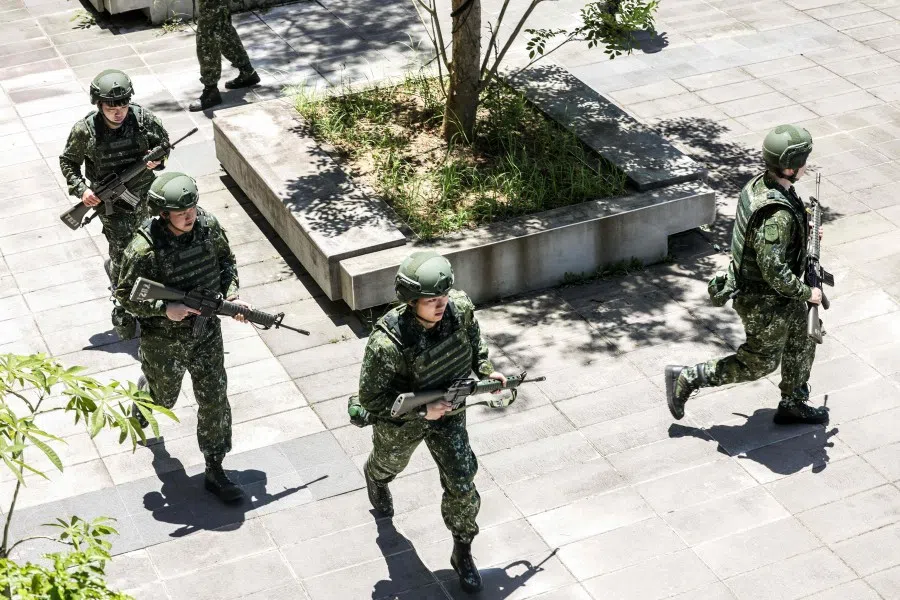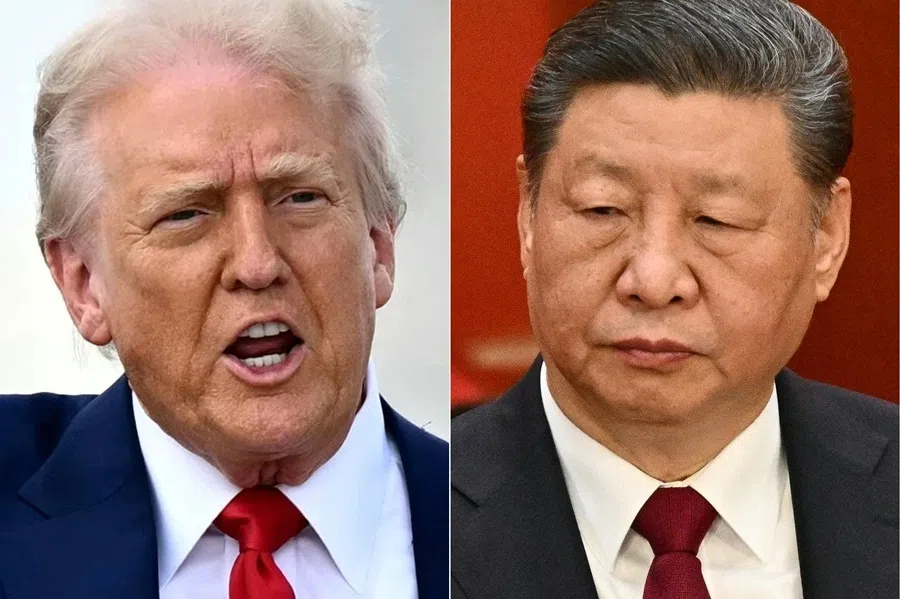Why Southeast Asia should help Washington think clearly on Taiwan
Amid growing risks of a conflict in the Taiwan Strait, Southeast Asian countries can spur thinking on the Taiwan question by prodding Washington to match its words with deeds.

America’s recent military strikes on Iran’s nuclear facilities have sparked debate about implications for the Taiwan Strait. If America’s use of force compels Iran to abandon its nuclear ambitions, this will serve as a reminder of the power of America’s punch, potentially reinforcing deterrence against any Chinese attempt to seize Taiwan by force.
Conversely, if America becomes embroiled in another military quagmire in the Middle East, Beijing could judge that it has a clearer path to seizing Taiwan. This could cause China’s leaders to become more aggressive in pursuing their goal of unifying both sides of the Taiwan Strait.
Even before America’s 21 June military strikes on Iran, US Secretary of Defense Pete Hegseth was warning that war in the Taiwan Strait “could be imminent”. Hegseth’s remarks marked a return to the on-again, off-again warnings about the Taiwan conflict by senior American defence officials. A similar pattern emerged at the beginning of the Biden administration. At that time, four-star generals and admirals appeared to be competing for dates to own in the prediction market.
As the US seeks to reinforce its deterrent posture in the strait, Southeast Asian countries have a role to play by steering the discourse in various ways, including getting the US to keep its military forces focused on the region despite pressing priorities elsewhere.
China’s military capacity to intimidate and/or invade Taiwan is significant and growing.
Situation in Taiwan Strait
Hegseth’s back-to-the-future warning about the risk of conflict in the Taiwan Strait raises several key questions for the region: Have security conditions in the Taiwan Strait recently changed? Why did Hegseth feel compelled to warn of an imminent risk of conflict? And how should Southeast Asian countries interpret Hegseth’s comments and respond to them?

The scale, sophistication, and frequency of China’s military drills surrounding Taiwan have grown considerably in recent years. China now maintains a persistent military presence in areas where it previously did not operate.
This month, Beijing for the first time launched both of its aircraft carriers — the Shandong and Liaoning — simultaneously in the Pacific. China has a third aircraft carrier presently undergoing sea trials. China is also expanding its inventory of missile systems capable of striking Taiwan, as well as American forces that could be called upon to aid Taiwan in the event of an attack. Taken together, China’s military capacity to intimidate and/or invade Taiwan is significant and growing.
Beijing has paired its growing military capabilities with a strategic messaging campaign to degrade confidence among the Taiwanese people in both America’s reliability as a security guarantor and in Taiwan’s capacity to sustain the status quo. Although there are a variety of factors impacting public opinion trends in Taiwan, the net effect is that there is an observable decline in public confidence in America’s reliability as a security partner. There is also diminishing public confidence in Taiwan’s capacity to sustain the status quo. As The Economist recently reported, “More than 80% of Taiwanese want to keep the ‘status quo’, but only about 20% think that is possible in the long run.”
What prompted Hegseth’s comments?
Based on past government experience and ongoing exchanges with currently serving officials, this author assesses that a few factors may have motivated Hegseth’s warning. First, Hegseth’s job, as he defined it, is to “re-establish deterrence”. Part of this effort requires orienting the US military to focus on the most urgent threats.
Hegseth and his policy team may be using the warning of imminent conflict in the Taiwan Strait to concentrate the Department of Defense on this strategic challenge. While Hegseth and his staff may have strategic intent to prioritise Asia, the decision is not theirs alone to make. US President Donald Trump, ultimately, is the decision-maker on force posture questions.

Second, Hegseth may be seeking to dial up pressure on Taiwan to increase its defence spending. From President Trump down through the military chain of command, US officials have been consistently urging Taiwan to commit more resources to national defence.
Currently, Taiwan spends 2.5% of its GDP on defence, with plans to raise that figure to more than 3%. Trump has called for the figure to be raised to as high as 10% — a level far higher than the 5% that the US has called on its allies to spend.
The advances in China’s military capabilities are significant, but they do not necessarily predicate that Beijing has decided to employ force to seize Taiwan.
Third, Hegseth may be signalling to Beijing that Washington remains laser-focused on deterring Chinese military adventurism. Indeed, he returned repeatedly to the Trump administration’s focus on deterring Chinese military aggression during his remarks at the Shangri-La Dialogue in early June.

Lastly, Hegseth may be trying to set expectations for America’s allies and partners to contribute more to deterring China from employing force to advance Beijing’s strategic objectives. By ratcheting up a sense of urgency, he may be trying to impress upon America’s allies that the time is now to do more to dissuade China from the use of coercion and force on its neighbours.
How can Southeast Asia respond?
Even though there is little in terms of tangible military contributions that Southeast Asian countries realistically could be expected to bring to bear in a cross-strait contingency, Southeast Asian leaders nevertheless could help spur progress in regional thinking on the Taiwan question by driving discourse around a few critical themes.
First, leaders and experts in the region can help newly arrived officials in Washington evaluate the signals China is sending. The advances in China’s military capabilities are significant, but they do not necessarily predicate that Beijing has decided to employ force to seize Taiwan. Indeed, an overly narrow focus on the military dimension of cross-strait tensions risks obscuring Beijing’s campaign of coercion without violence.
Ultimately, there is a real risk of conflict in the Taiwan Strait, but there is no visible evidence of imminent risk.
Second, regional leaders can encourage America’s leaders to match their words with deeds. If Asia is the priority theatre and Taiwan is the central security challenge within it, as American security officials have declared, then the US should deploy more military capabilities into the region, rather than diverting assets to other theatres.
The strategic reality of deepening US involvement in Middle East conflicts will militate against attempts to elevate focus on Asia. No amount of eloquence about America’s prioritisation of Asia will hold any deterrent value if the US becomes bogged down in another Middle East quagmire.
Ultimately, there is a real risk of conflict in the Taiwan Strait, but there is no visible evidence of imminent risk. The more the region pools strength and speaks with one voice about the importance of upholding peace and stability in the Taiwan Strait, the more manageable the risks may be.
This article was first published in Fulcrum, ISEAS – Yusof Ishak Institute’s blogsite.





